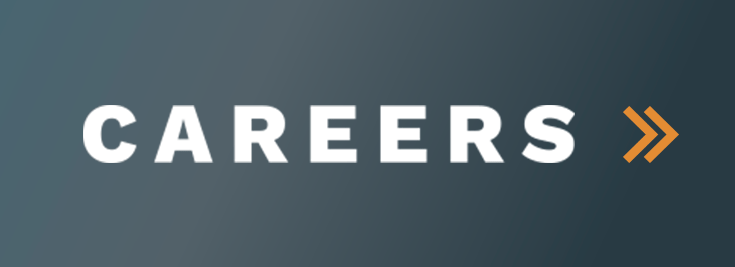Our clients want to realize the full potential of their investment in a commodity trading and risk management (CTRM) system. However, there is a general feeling among clients that their CTRM system can fully support their entire trading business, but they have not yet achieved this and are unsure how to get there.
System infrastructure, optimization, and performance do play an important role. However, many other barriers to the full use of business-critical CTRM systems exist, and these barriers are mainly human.
To overcome human barriers, you must discover how personnel use the system and identify where they see challenges to efficient workflows.These are examples of good questions to ask personnel:
- What can we do to make you use the system more?
- What prevents you from performing a certain task?
- Can we improve the workflow to better support your business process?
During the implementation phase, most platforms provide out-of-the-box functionality to customize the user experience and streamline productivity, but clients don’t always take advantage of these features. Unfortunately, usability and automation that support workflows are often considered nice-to-haves. This is understandable during the implementation phase of a project, which is generally fraught with tight deadlines, scope control, and a dominant focus on core functionality versus nice-to-haves. The negative effect of not implementing these so-called nice-to-haves—and how it impacts user buy-in of the chosen solution—is often underestimated.
Once a CTRM system is live, revisiting the nice-to-haves and improving the user experience can only lead to enhanced operational efficiency, higher buy-in among personnel, increased system use, and the growth of the system to cover more of the business landscape. In turn, this can help to reduce the use of self-built Excel silos, improve data accuracy, and provide real-time visibility of data. This can result in less operational risk across the entire business lifecycle and create a self-improving cycle that again encourages more system use and better data.
When a CTRM system has been established and significant data has been generated, it’s a good idea to review the system infrastructure from a technical perspective and determine whether it can be improved or optimized. Product upgrades can also significantly improve the functionality and performance of your system.
Common inefficiencies include database round trips and missing indexing to the underlying data tables, which have a cumulative impact on repetitive processes. It’s a common development scenario that solutions are built on the same network segment or even on the same machine. When you then deploy to production, the solution is unexpectedly slower. This can be more prevalent on cloud deployments, as transactional limits and distance between servers can amplify the slowing effect.
Example: We have 10,000 rows of financial data and want to convert from GBP to USD. If the logic retrieves the exchange rate per row—and assuming this takes five milliseconds per trip—you are suddenly looking at 50 seconds spent on 10,000 round trips to the database! The exchange rates should have been loaded in one go, resulting in one round trip and only one transaction (for this process). It’s a similar scenario with missing indices, which result in table scans that can have a massive impact on performance.
Now that you have all this data, are you extracting all the value you can from it? Your existing CTRM system may offer good data visibility out of the box and the capability to produce standard business reports, but you can go even further with data analytics. Whether you want to have web-based, visually appealing reports; a trading-data warehouse that combines multiple systems into one central hub; a governed data catalog to support ad-hoc analysis from a single version of the truth; or live position and P&L reports deployed across multiple regions, data analytics can help you reach your data-visualization goals.
Lastly, knowledge should be transferred from the project implementation team to your support team and business users, including super-users, internal IT staff, or external support partners. This continuity in knowledge ensures that your teams understand and can support the enduring CTRM solution.
Why capSpire?
Having comprehensive, in-depth expertise for your CTRM system in-house may not be possible for your organization. Whether you are looking for a complete support partner or you want to augment your existing team, capSpire can partner with you to help you understand the barriers to fully realizing the potential of your chosen CTRM system and guide you to extracting even greater value from your investment.
capSpire has experience in on-site, hybrid-cloud, and full-cloud implementations, and can support the analysis of potential bottlenecks and recommend infrastructure improvements to increase throughput and reduce latency. With our depth and breadth of knowledge, we can also assist you in executing system upgrades on-site or in migrating to the cloud to avoid common pitfalls and escalating costs.
To enable us to better train your personnel and provide more robust value to your business, all of our team members complete a capSpire bootcamp that covers the entire business lifecycle of CTRM from both functional and technical perspectives. When a vendor provides education services, we ensure that our team is fully certified on the specific vendor’s product. Currently, capSpire holds 25% of the global certification pool for one of the most prominent CTRM vendors. Our experienced consultants, targeted education, and vendor-aligned approach means we provide tailored training to our clients based on their unique business workflows.
Supporting your CTRM platform to fully realize your investment can also be challenging with ongoing regulations, product changes, and shifting geopolitical and environmental landscapes, all of which impact businesses on an almost daily basis. At capSpire, we understand your challenges and your need to control costs in a competitive market.
Through our managed services offering, we deploy more than 100 industry experts globally who have collectively supported more than 200 clients as needed or when issues arise—on a remote or on-site basis. capSpire monitors infrastructure (operations management), systems, and BAU ServiceDesk using best practices and leading software. We specialize in energy and commodity trading, and have delivered thousands of fully supported enhancements to integrate CTRM systems within business landscapes and fully align them with business processes.
 |  |
About capSpire
capSpire provides the unique combination of industry knowledge and business expertise required to deliver impactful business solutions. Trusted by some of the world’s leading companies, capSpire’s team of industry experts and senior advisors empowers its clients with the business strategies and solutions required to effectively streamline business processes and attain maximum value from their supporting IT infrastructure. For more information, please visit www.capspire.com.









